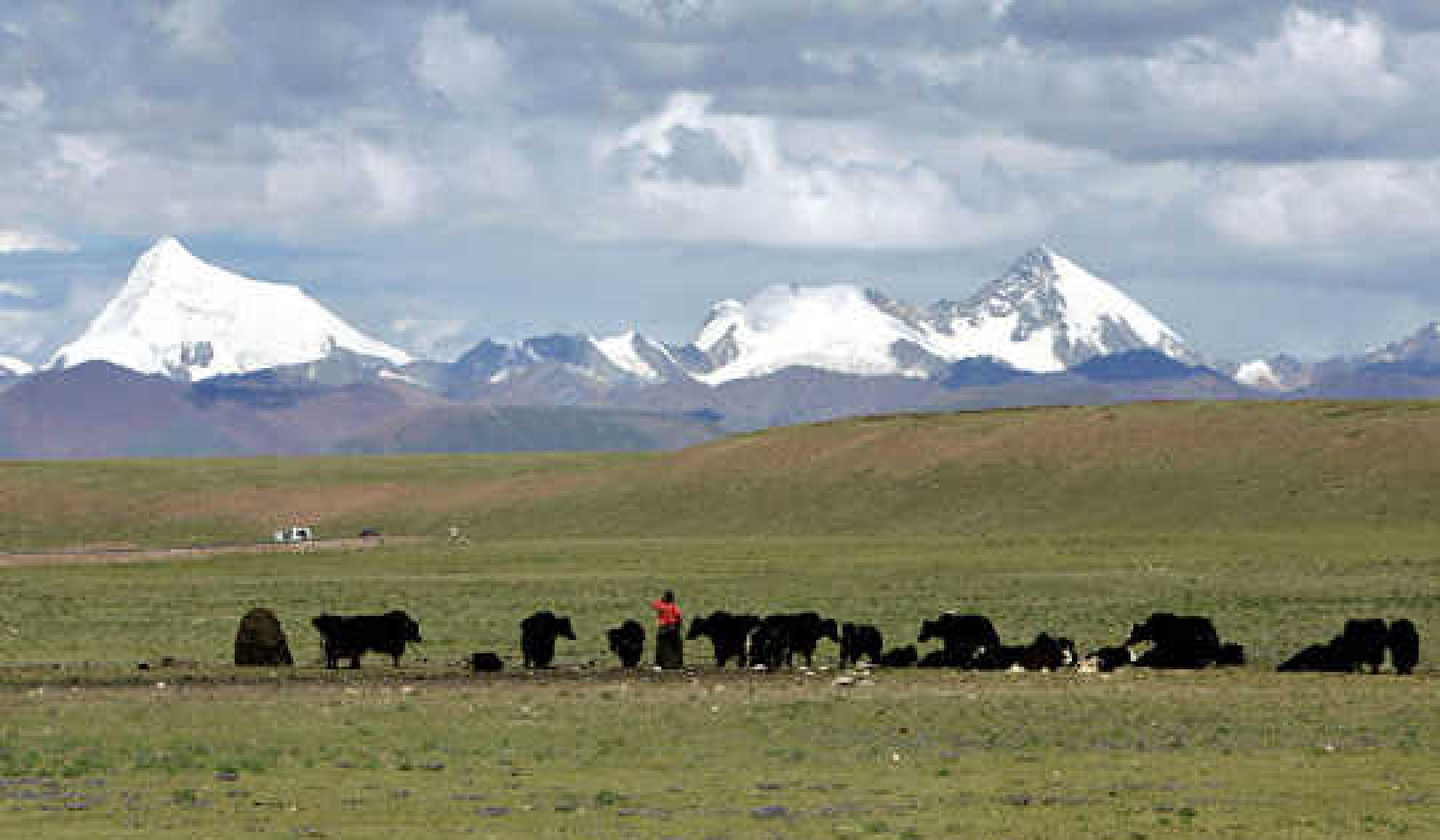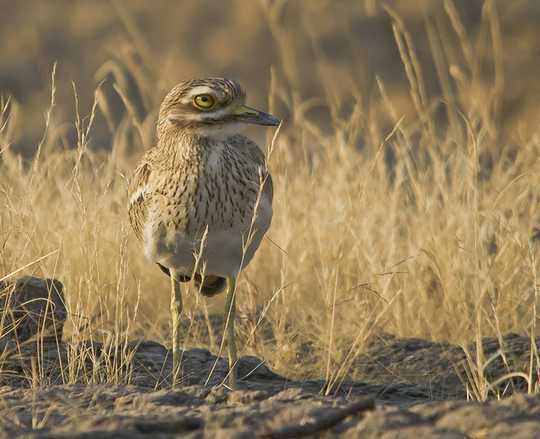
A Eurasian stone-curlew stands amid short grass. Dhaval Vargiya/Shutterstock, CC BY-SA
In conservation, charismatic mammals and birds such as the black rhinoceros and the capercaillie get a lot of attention, while others, like invertebrates, are often ignored. One way of addressing this problem is to focus on protecting “umbrella species”. These are species whose conservation can benefit many others, especially those that rely on similar habitats. But does this work in practice?
We had a unique opportunity to test the idea with one of the largest field experiments in Europe. In a region called Breckland in the East of England, we used a tractor to churn tall grassland into bare, sandy plots for Eurasian stone-curlew, a rare summer visitor. The disturbed soil provides excellent camouflage for stone-curlew nests and chicks, and Breckland holds the majority of the UK’s breeding population.
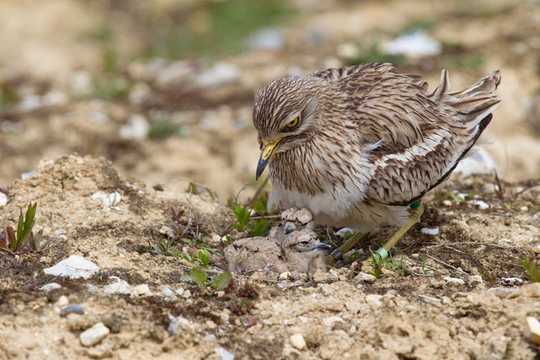
The Eurasian stone-curlew with well-camouflaged chicks. Chris Knights, Author provided
Rabbits used to graze in large numbers to create this habitat for stone-curlews, but numbers have collapsed over the past 50 years due to disease, culling and predation. Without the rabbits, stone-curlew habitat shrinks – and so do the numbers of rare insect and plant species that also thrive in these bare patches of land.
It’s hard getting people to care about beetles and seedlings – especially when there are so many different species. But an assessment of the region’s biodiversity predicted that managing habitats for stone-curlews could benefit many other rare and threatened plants and invertebrates with no additional effort.
That’s because these priority species need the same bare and open habitats as stone-curlews. Predatory beetles like the open territory to spot and hunt prey, whereas many colonising plants like the clear space to set down roots with little competition.
A programme led by the Royal Society for the Protection of Birds (RSPB) over thirty years has endeared the stone-curlew to many local bird watchers, so people usually don’t need convincing about the value of protecting them. Because stone-curlew breeding habitat is so compatible with many other threatened species, we thought that looking after them would take care of nearly everything else. This includes species like the tiny “fingered speedwell” plant (Veronica triphyllos) and the “wormwood moonshiner” beetle (Amara fusca), both of which are endangered in the UK.
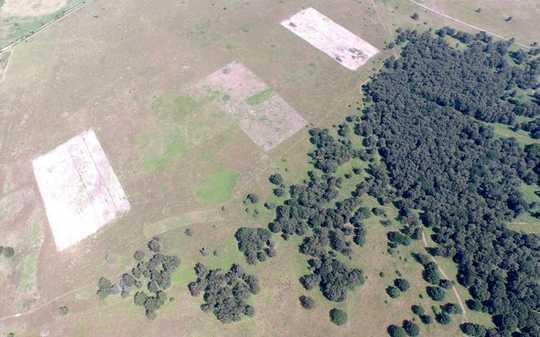
Three of the 66 experimental plots where stone-curlews were encouraged. Jeff Baker, Author provided
Propping up umbrellas for beetles
Each experimental plot was the size of two football pitches and almost entirely devoid of vegetation. We sampled an incredible 30,000 insects – including 402 species of beetles, bugs and ants – by placing 1,000 small containers within the plots and within grassland that wasn’t being managed as a comparison.
The habitats we created for stone-curlews had more insects, including rare priority species which were found hardly anywhere else in the country, such as the rove beetle (Philonthus lepidus). After the experiment, a bug showed up that’s never been recorded in Britain before and is only known by its scientific name, Acrocephalus languidus.
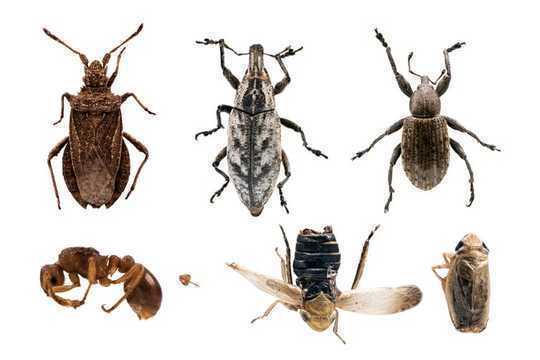
Some of the invertebrates which benefited from stone-curlew management, including Acrocephalus languidus (bottom right) – a species new to Britain. Annabelle Horton, Author provided
We knew many rare insects and plants preferred the same kind of habitat as stone-curlews, so we weren’t too surprised with our results. But they do suggest something very useful. Finding and protecting a single umbrella species could achieve the same result as multiple projects targeted at many other species, for a fraction of the cost.
This offers a shortcut for conservation. In places with many rare and threatened species – such as the chalk grassland plains of Southern England or the Caledonian pine forests of the Scottish Highlands – a catalogue of proven umbrella species could help conservationists confidently manage habitats in the knowledge that vast numbers of other species would also benefit.![]()
About The Author
Robert Hawkes, PhD Researcher in Environmental Science, University of East Anglia
This article is republished from The Conversation under a Creative Commons license. Read the original article.
Related Books
Climate Adaptation Finance and Investment in California
by Jesse M. Keenan This book serves as a guide for local governments and private enterprises as they navigate the unchartered waters of investing in climate change adaptation and resilience. This book serves not only as a resource guide for identifying potential funding sources but also as a roadmap for asset management and public finance processes. It highlights practical synergies between funding mechanisms, as well as the conflicts that may arise between varying interests and strategies. While the main focus of this work is on the State of California, this book offers broader insights for how states, local governments and private enterprises can take those critical first steps in investing in society’s collective adaptation to climate change. Available On Amazon
This book serves as a guide for local governments and private enterprises as they navigate the unchartered waters of investing in climate change adaptation and resilience. This book serves not only as a resource guide for identifying potential funding sources but also as a roadmap for asset management and public finance processes. It highlights practical synergies between funding mechanisms, as well as the conflicts that may arise between varying interests and strategies. While the main focus of this work is on the State of California, this book offers broader insights for how states, local governments and private enterprises can take those critical first steps in investing in society’s collective adaptation to climate change. Available On Amazon
Nature-Based Solutions to Climate Change Adaptation in Urban Areas: Linkages between Science, Policy and Practice
by Nadja Kabisch, Horst Korn, Jutta Stadler, Aletta Bonn This open access book brings together research findings and experiences from science, policy and practice to highlight and debate the importance of nature-based solutions to climate change adaptation in urban areas. Emphasis is given to the potential of nature-based approaches to create multiple-benefits for society.
This open access book brings together research findings and experiences from science, policy and practice to highlight and debate the importance of nature-based solutions to climate change adaptation in urban areas. Emphasis is given to the potential of nature-based approaches to create multiple-benefits for society.
The expert contributions present recommendations for creating synergies between ongoing policy processes, scientific programmes and practical implementation of climate change and nature conservation measures in global urban areas. Available On Amazon
A Critical Approach to Climate Change Adaptation: Discourses, Policies and Practices
by Silja Klepp, Libertad Chavez-Rodriguez This edited volume brings together critical research on climate change adaptation discourses, policies, and practices from a multi-disciplinary perspective. Drawing on examples from countries including Colombia, Mexico, Canada, Germany, Russia, Tanzania, Indonesia, and the Pacific Islands, the chapters describe how adaptation measures are interpreted, transformed, and implemented at grassroots level and how these measures are changing or interfering with power relations, legal pluralismm and local (ecological) knowledge. As a whole, the book challenges established perspectives of climate change adaptation by taking into account issues of cultural diversity, environmental justicem and human rights, as well as feminist or intersectional approaches. This innovative approach allows for analyses of the new configurations of knowledge and power that are evolving in the name of climate change adaptation. Available On Amazon
This edited volume brings together critical research on climate change adaptation discourses, policies, and practices from a multi-disciplinary perspective. Drawing on examples from countries including Colombia, Mexico, Canada, Germany, Russia, Tanzania, Indonesia, and the Pacific Islands, the chapters describe how adaptation measures are interpreted, transformed, and implemented at grassroots level and how these measures are changing or interfering with power relations, legal pluralismm and local (ecological) knowledge. As a whole, the book challenges established perspectives of climate change adaptation by taking into account issues of cultural diversity, environmental justicem and human rights, as well as feminist or intersectional approaches. This innovative approach allows for analyses of the new configurations of knowledge and power that are evolving in the name of climate change adaptation. Available On Amazon
From The Publisher:
Purchases on Amazon go to defray the cost of bringing you InnerSelf.comelf.com, MightyNatural.com, and ClimateImpactNews.com at no cost and without advertisers that track your browsing habits. Even if you click on a link but don't buy these selected products, anything else you buy in that same visit on Amazon pays us a small commission. There is no additional cost to you, so please contribute to the effort. You can also use this link to use to Amazon at any time so you can help support our efforts.
























